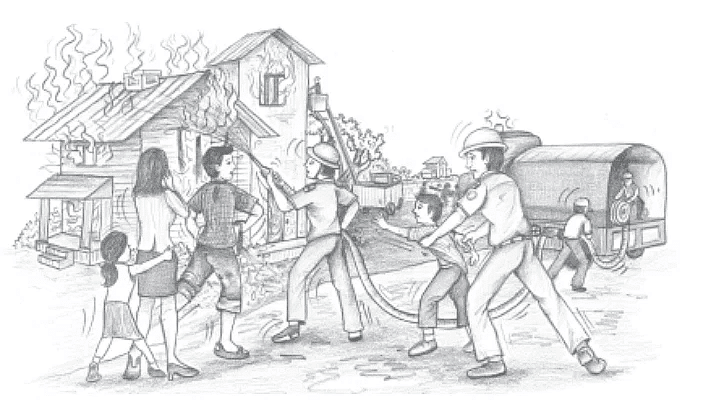NCERT Solutions for Class 9 English Moments Chapter 8 - A House is not a Home
Think About It
Q1. What does the author notice one Sunday afternoon? What is his mother’s reaction? What does she do?Ans: One Sunday afternoon, the author noticed a strange smell and saw smoke pouring in through the seams of the ceiling. The smoke quickly filled the room, making it hard to see. As they rushed outside, the roof was already engulfed in flames and spreading rapidly. His mother ran back into the house, emerging with a small metal box containing important documents. In a crazed state, she attempted to retrieve more items, driven by the desire to save her late husband's pictures and letters, which were her only memories of him. Despite the author's pleas, she rushed back inside, and he was held back by a fireman.
Q2. Why does he break down in tears after the fire?
Ans: After the fire, he broke down in tears because he realised he was experiencing a significant loss. The absence of his cat became apparent, and the weight of everything hit him at once: the new school, the fire, and the missing cat. This overwhelming realisation led to his emotional breakdown.
Q3. Why is the author deeply embarrassed the next day in school? Which words show his fear and insecurity?
Ans: The author feels deeply embarrassed at school the next day because he was still wearing the dress he had put on for church, and he had no shoes after losing them in the fire. He borrowed tennis shoes from his aunt, which added to his discomfort. He felt that his outfit looked weird, and he had no books or homework, as his backpack was also gone. This situation made him feel like an outcast and a geek, leading him to wish he could just curl up and die. Words that express his fear and insecurity include "outcast and geek," "like a zombie," "wanted to curl up and die," "everything felt surreal," and "all the security...had all been ripped away."

Q4. The cat and the author are very fond of each other. How has this been shown in the story? Where was the cat after the fire? Who brings it back and how?
Ans: The author had a deep affection for his cat, as shown by his inconsolable tears when she went missing after the fire. He frequently visited the site of his former home, hoping to find her. He reminisced about how the cat would curl up in his pocket and fall asleep, highlighting how much he missed her. After the fire, the cat was so frightened that she ran over a mile away. A kind woman found her and took her in, noticing the author's contact number on the cat's collar. Unfortunately, she was unable to reach him because their phone service had been disconnected due to the fire. Nevertheless, the woman made a personal effort to locate the author and successfully returned the cat to him.
Q5. What actions of the schoolmates change the author’s understanding of life and people, and comfort him emotionally? How does his loneliness vanish and how does he start participating in life?
Ans: The schoolmates demonstrated genuine concern for the author, despite not knowing him well. They helped him by collecting supplies, books, and clothes. Individuals he had never spoken to before began to approach him, offering friendship and inviting him to their homes. This outpouring of kindness overwhelmed him, and he realised that his new school and the people around him were supportive. As a result, he shifted his focus away from feelings of fear and insecurity, gaining confidence that everything would be alright. His loneliness faded, and he started to actively participate in life.
Q6. What is the meaning of 'My cat was back and so was I'? Had the author gone anywhere? Why does he say that he is also back?
Ans: After the fire, the author felt deeply depressed and wanted to give up on life. He had lost hope of ever finding his cat. However, the kindness of those around him, especially at school and a woman who returned his cat, helped him see that things could improve. With his cat back, he felt ready to move forward. This is what he meant by saying, 'My cat was back and so was I.' The author had not physically gone anywhere but had experienced a shift in his outlook. He felt gratitude for his new friends and the support he received, which brought him back to life. As he watched his house being rebuilt, he realised that his life was also being restored. With his cat and new friends by his side, he felt a renewed sense of hope and purpose.
|
180 videos|980 docs|124 tests
|
FAQs on NCERT Solutions for Class 9 English Moments Chapter 8 - A House is not a Home
| 1. What are the main themes explored in "A House is not a Home"? |  |
| 2. How does the author convey the emotional significance of a home? |  |
| 3. What role does the cat play in the narrative? |  |
| 4. How does the setting influence the protagonist's feelings in the story? |  |
| 5. What message does the author leave the readers regarding the idea of home? |  |

















